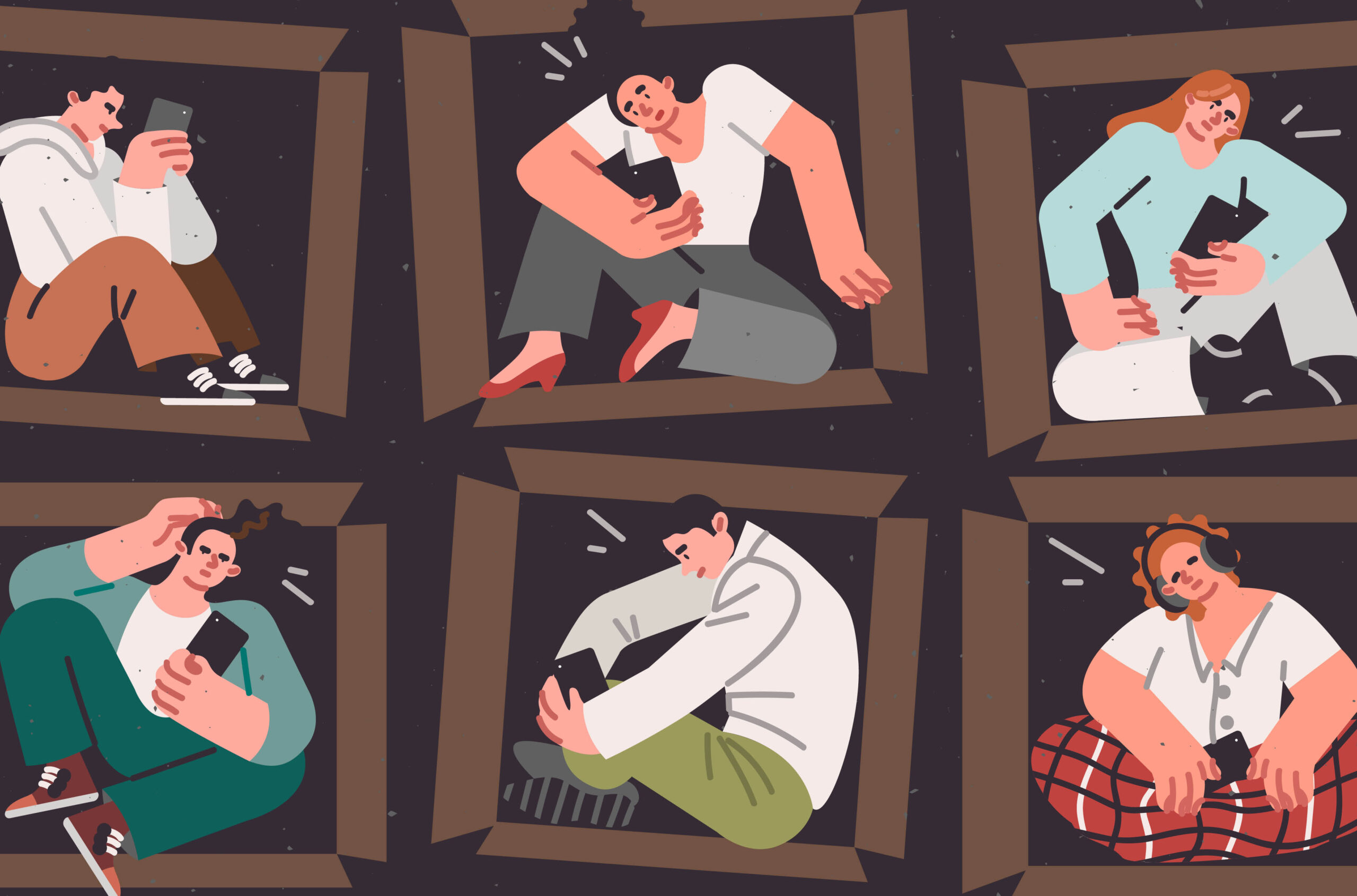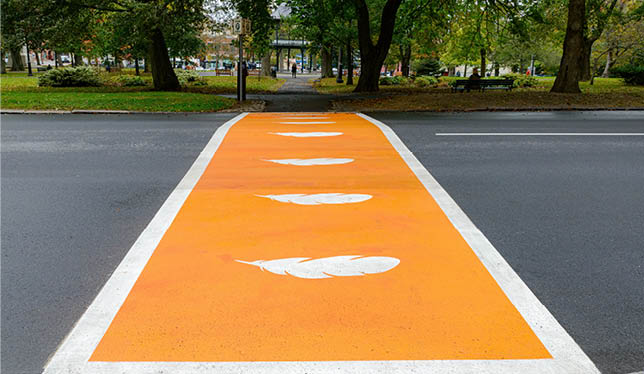The benefits of creative writing
By giving yourself permission to write freely, you may find your academic writing also improves.

For Canadian academics who want to create outside of their discipline – whether that’s to write novels for the mass market, pen poetry collections, or find more ways to infuse their scholarly work with creative expression – there is a tension. Academia does not weigh non-scholarly work the same as it does lofty publications in scarcely read journals. This puts scholarly workers, from grad students to long-tenured professors, at a disadvantage when it comes to exploring a writing practice that doesn’t perfectly map to a grand research paradigm.
It’s a tension that Adam Davies feels as they navigate being an assistant professor at the University of Guelph who also has a vibrant writing practice that isn’t entirely wrapped up in traditional academic production.
“Because of how we train academics and how the peer review process works, we sometimes see the peer-reviewed articles as more important,” they say, with creative work considered something done on the side. But “as a society, we have to be careful not to see creative and artistic work as an extra or an additive.”
Due to that imbalance, with university administrators much preferring scholarly publications to other alternatives, Dr. Davies has taken to including their poetry in their academic work – their research focuses on early childhood education and how queerness and gender are taught and reinforced. This gives readers another lens through which to see the topic and disrupt what academic scholarship can and should look like.
Dr. Davies is also doing more to explore the business side of writing, including focusing on publishing in collections that aren’t tied to the academic sphere. However, navigating the business of writing is a challenge at the best of times, with no clear pathway outside of trying and failing. Master’s of fine arts programs rarely teach the business of writing, and writing-focused programs like journalism also struggle to provide any context when it comes to not just how to write, but how to sell what you’re writing. It’s not that there aren’t programs that teach it, but most are focused more on craft than commerce.
Rachel Stapleton, senior acquisitions editor at University of Regina Press, says that while academia has misconceptions about the broader publishing industry, the publishing industry holds some unhelpful misconceptions as well that can be barriers to academics getting their non-scholarly work out to the world.
“There is so much creativity and creative potential in the academy but I think there remains a disconnect in the broader publishing industry about what it means to be an academic or a scholar,” she says. “Firstly, all academics are already writers and published authors, often with a long track record of publications. Second, that despite dated stereotypes about dense, jargon-heavy prose, many academic writers are in fact very clear and stylish writers, and spend vast amounts of time reading and thinking about writing as an art.”
One way Dr. Stapleton likes to combine a writer’s scholarly and non-scholarly writing skills is to think about new ways to adapt the form they are writing in.
“What does it mean for a scholar to adapt their dissertation – the most traditional of scholarly genres – into a graphic novel?” she asks. “What happens when a historian turns their research into an epic poem? Is there a place for footnotes in a novel? In what new ways can text and image work together? What new (to us) ways of paying attention can we learn about the world?”
How do you find the time to write
Academic and non-academic writers generally have one thing in common when it comes to their writing practice: a lack of time. For Dr. Davies, finding time for their writing means seeing the task as core to the life they want to live.
Regardless of where the writing ends up, to have an hour to write freely “that’s an hour of free exploration that is intrinsic,” they say. “And so, when I say to myself that I’m going to do that writing time, I’m keeping a promise to myself when I actually do it, and therefore honouring myself and showing myself that I value myself enough to keep that commitment to me.”
Meanwhile, Madeleine Maillet, the marketing and publicity manager at the University of Regina Press, whose work has been published in the Journey Prize Anthology and Best Canadian Stories anthologies, says that treating your creative project much the same as a research endeavour can provide a valuable pathway forward.
“I would say that keeping a journal or keeping a notebook with your ideas and your reflections on a hopefully daily or a regular basis is a really helpful practice. Because, as we know, the work doesn’t always happen in blocks,” she says. ”It can sometimes happen in very small increments, and … just as a research project kind of gathers heft and weight and seriousness around itself as you get deeper and deeper into research, creative writing is very much the same.”
For her, while she’s working on her current project, which is increasingly only in the evenings once her child is in bed, the feeling of momentum that comes from a non-scholarly project mirrors what makes a good journal article: “You have to build up both a reading list and a kind of consuming curiosity for a subject or for a story idea or a novel idea in the same way as you have to build that up for your research.”
Why not give it a try?
The average Canadian author’s income from their writing, according to multiple sources, hovers around $10,000 a year. As a result, authors usually have a day job and, not unlike sessional lecturers, are jumping from proverbial boat to boat, trying to keep the ocean of expenses at bay. Dr. Davies feels that part of being an academic who writes outside of the academy means benefiting from less autonomy than those writers who aren’t affiliated with an institution.
“When you work in higher education and academia there is often a professionalized expectation of who you’re supposed to be and what is and isn’t sayable, because the moment you start saying what’s not sayable, you’re transgressing the boundaries of respectability, so to speak.”
Still, Ms. Maillet is keen to remind academics who write creatively and for a broader audience that the skill set that makes for a good academic can also be deployed wisely as a creative writer.
Academics, she says, have the “luxury” of becoming experts in a topic, unlike most other people. The “intensity of that focus and that reflection, when it’s redirected towards creative work, can really shine through,” she says. For that reason, she urges all academics to give it a try: “I love to read those kinds of books and discover new academic writers in non-academic or non-scholarly formats.” For Maillet, her takeaway is that the foundation of a good book, scholarly or not, comes from the same root.
“The author’s curiosity, their drive, their work. And that’s true of any book that is really excellent, and that I think that an excellent scholarly book, and the kind of impact that it makes, when you see those trade books making that kind of an impact, it’s often for the same reason.”
John Loeppky is a disabled freelance writer, actor and creative currently living in Treaty 6 Territory in Saskatoon.
Featured Jobs
- Sociology - Professor (Quantitative Data Analysis Methods and Social Statistics)Université Laval
- Biochemistry, Microbiology and Bioinformatics - Faculty Position (Microbial Systems Biology, Omics Data Analysis)Université Laval
- Director and Stauffer-Dunning Chair, School of Policy Studies - Associate or Full ProfessorQueen's University
- Law - Assistant or Associate Professor (International Economic Law)Queen's University
- Geography - Assistant Professor (Indigenous Geographies)University of Victoria















Post a comment
University Affairs moderates all comments according to the following guidelines. If approved, comments generally appear within one business day. We may republish particularly insightful remarks in our print edition or elsewhere.